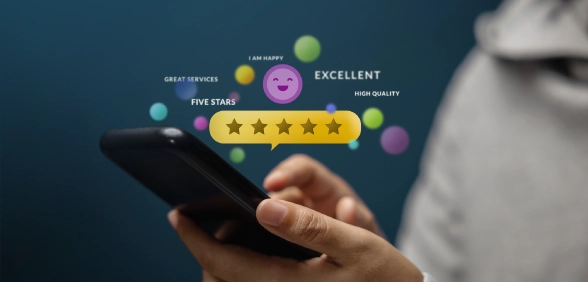Customer Experience management is a long game. Usually the bigger the issue the longer it will take to resolve (if a solution is actually known). If the solution isn’t known, getting executive buy in to invest in a deep dive root cause analysis can take even longer. Moreover as customer experience managers, we often find ourselves lacking confidence that our suggested improvements might even work out, so why take a chance?
Customers who respond to requests for feedback, are taking time out of their busy day to share what annoyed or delighted them about their customer experience. Actually, when someone is providing feedback, they are reflecting upon a reference point. “Customers are comparing you to the best customer experience they’ve ever had”. Remember when you went to the local restaurant recently and had that *amazing dish*, and then every other restaurant you go to you say, “this isn’t as good as that other restaurant we went to”. It happens in customer experience with services and products too. That reference point is an experience they have had with your competitor, or something else in their day to day life. So, when they call it out, literally they are sharing that they’ve seen this better somewhere else. Or that you are doing it better then somewhere else.
So why do customers keep telling you things you already know? It’s because it impacts their customer journey. It’s impacting the experience they have fulfilling a need by using your services. It’s what comes first in their mind when you are requesting information regarding their experience.
So, we revolve back to the age-old question of why customers don’t tell us things we don’t already know? It could be simply because they don’t feel their prior concerns are addressed or acknowledged. (Link article regarding closing the loop). They just might give us some new insight if they prior concerns are addressed.
However, this is reality. It takes time to make improvements, and even longer for a customer to notice the improvements (unless you tell them) … so what do you do in the meanwhile?
1.Leverage and maximize the good things customers are saying
Usually when there is a trend of what angers the customers, there’s also a trend of what delights customers. Do your frontline teams know what that is? (some suggestions here for sharing wins internally). Is there a marketing campaign/newsletter ready to share those stories of delight? This helps to encourage that not all things are bad and can pump up the team to deliver more than expected.
2.Follow up with the customer
Understand the bigger picture around the experience. What happened right before and after. Do they have any suggested improvements? When building out a case for making improvements, knowing the bigger picture will help dissect where the point of weakness occurs along their customer journey. Potentially the solution isn’t improving the particular thing the customers are complaining about but rather improving the one step before or after.
3.Keep track of and bucket these responses together
To enable deeper analysis and to build up a case for investigation, focus groups, or other investments needing executive buy in; make it easy on yourself and track. Additionally, while building up that case, in your own mind you are probably seeing trends in demographics or geography. Big bang solutions are usually costly, so getting a quick win by implementing a solution where it will make the most impact the soonest (such as 1 or 2 stores instead of all 200) helps build momentum. Thus, building up these buckets means it will be quicker to tackle the issues sooner.
Being generous vs ingenuity — is it sustainable?
What holds back a lot of companies from making improvements, is that once you have added value (or made an improvement), it becomes part of the offer and loses its “wow” effect over time. That is why CX leaders are forever changing and looking for improvements to stay ahead from the pack. CX leaders see customer experience as a long-term game that gets chipped at piece by piece. So, if your customers keep telling you things you already know, maybe its because they feel you still haven’t addressed or acknowledged those concerns.
Enjoyed this post? Read more of our blogs.
Know more about our Platform or Request a Demo.






